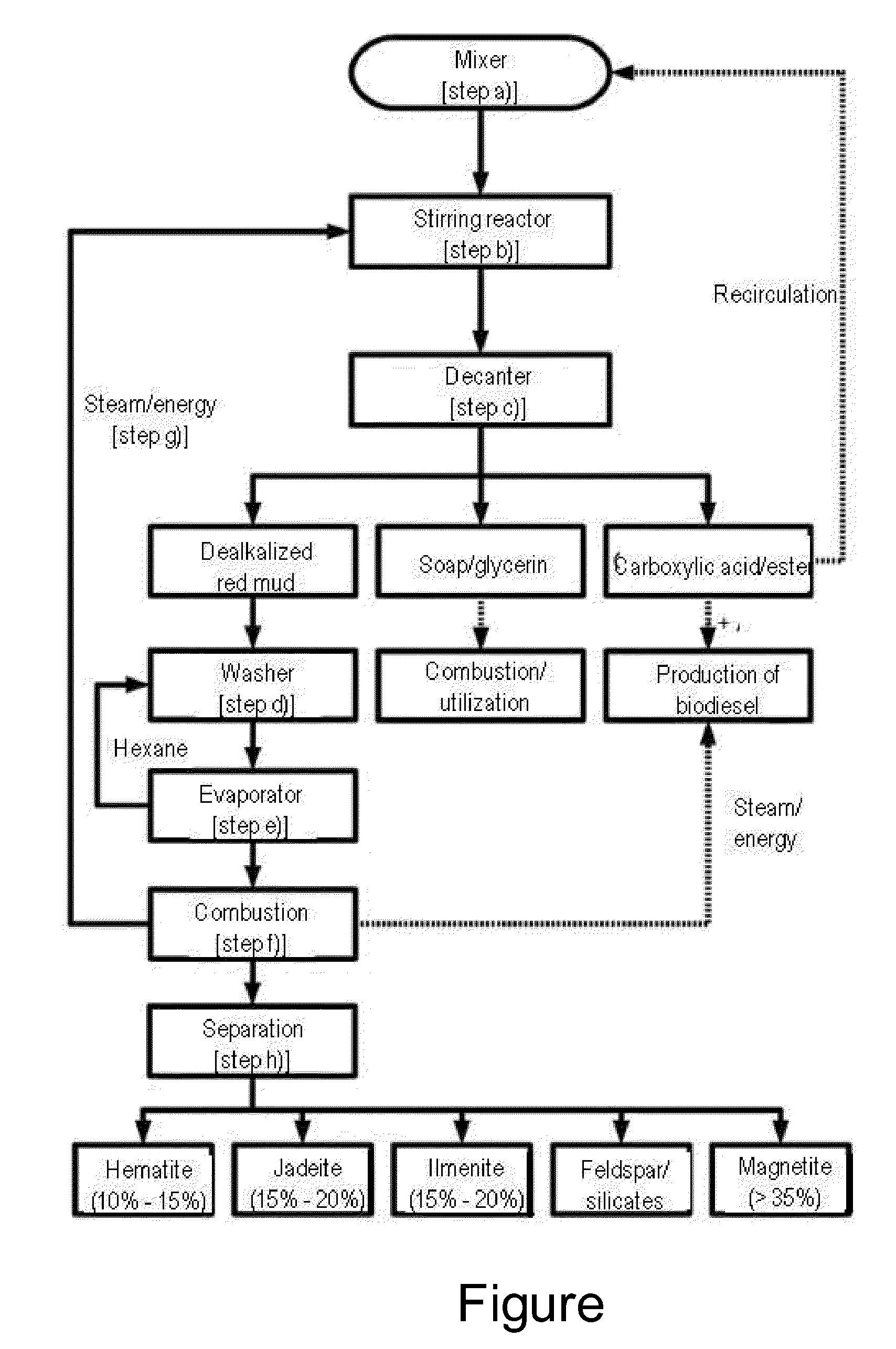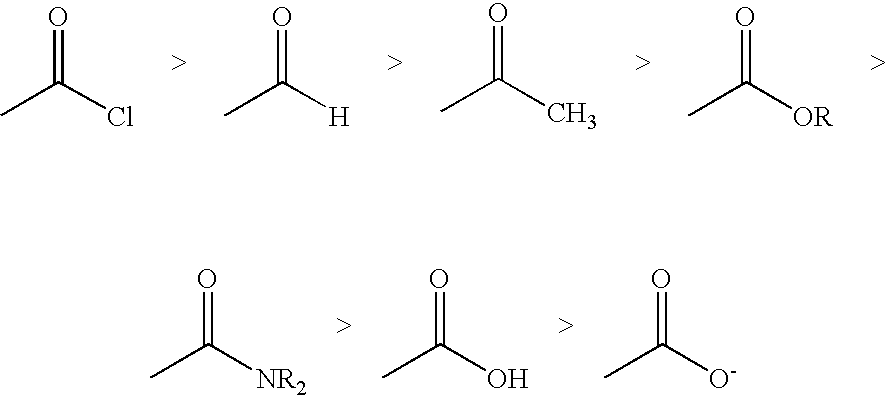Process for alkaline hydrolysis of carboxylic acid derivatives to carboxylic acids
a technology of alkaline hydrolysis and carboxylic acid, which is applied in the preparation of carboxylic acid amides, organic chemistry, carboxylic compound preparations, etc., can solve the problems of high alkalinity of red mud, high cost and high cost of storage and partial utilization, and maximize product yield , the effect of inexpensive availability
- Summary
- Abstract
- Description
- Claims
- Application Information
AI Technical Summary
Benefits of technology
Problems solved by technology
Method used
Image
Examples
example 1
[0030]Rape oil is mixed with red mud and water in a mixer (step a)) and pumped into a stirring reactor. In this context, it is of course conceivable that the respective reactants are considered and the pH value of the reaction mixture is adjusted to a respectively optimum value optionally by addition of water, acids or the like. The mixture is heated to about 98° C. in the stirring reactor and mixed for the duration of 2 hours (step b)). Therein, an alkaline hydrolysis of the glycerides contained in the rape oil to the corresponding carboxylic acids and glycerin is effected with the aid of the hydroxide ions contained in the red mud.
[0031]After completion of the reaction, the reaction mixture is transferred into a decanter (step c)), where it sediments within 30 minutes and forms various regions. Therein, they include an upper liquid phase with the developed fatty acids and non-reacted vegetable oil as well as a second underlying liquid phase with glycerin as well as the correspondi...
example 2
Alkaline Hydrolysis of Carboxylic Esters
[0035]In a reaction vessel with stirrer and reflux condenser, 200 g of red mud are mixed with 100 g of 2-methylbutanoic acid ethyl ester, wherein the red mud has a residual water content above 10%. Optionally, the mixture can be diluted with water or an inert solvent as far as mixing without problem is ensured. In use of liquid carboxylic esters, they basically can also be added in excess and thereby function as a solvent themselves. The mixture is stirred at room temperature for about 2 hours with stirring, wherein the 2-methylbutanoic acid ethyl ester saponifies to 2-methylbutanoic acid and ethanol. Optionally, towards the end of the reaction time, the reaction temperature can be increased and the mixture be boiled at reflux in order to ensure a conversion as complete as possible. After cooling, the mixture is filtered and the liquid phase is extracted plural times with hexane. The combined organic phases are subsequently dried over calcium ...
example 3
Alkaline Hydrolysis of Carboxylic Chlorides
[0036]In a reaction vessel with reflux condenser, drying tube and dropping funnel, 5 g of red mud are mixed with 20 g of pyridine. With stirring, about 2 g of benzoyl chloride are carefully added in drops. After occurred addition, the mixture is heated on the water bath for 10 minutes. Alternatively, it can also be stirred at room temperature for 1 hour. After cooling, one adds ice water and filtrates the mixture through a glass frit, wherein the dealkalized red mud contained in the amorphous filter cake is post-washed with ice water. Alternatively, the dealkalized red mud can also be separated from the liquid phase by sedimentation and subsequent decantation. Subsequently, the filtrate is acidified with concentrated hydrochloric acid and three times extracted with ether. The combined ethereal phases are sequentially washed with saturated sodium hydrogen carbonate and saturated sodium chloride solution and dried over sodium sulfate. Finally...
PUM
| Property | Measurement | Unit |
|---|---|---|
| boiling temperature | aaaaa | aaaaa |
| pressure | aaaaa | aaaaa |
| temperature | aaaaa | aaaaa |
Abstract
Description
Claims
Application Information
 Login to View More
Login to View More - R&D
- Intellectual Property
- Life Sciences
- Materials
- Tech Scout
- Unparalleled Data Quality
- Higher Quality Content
- 60% Fewer Hallucinations
Browse by: Latest US Patents, China's latest patents, Technical Efficacy Thesaurus, Application Domain, Technology Topic, Popular Technical Reports.
© 2025 PatSnap. All rights reserved.Legal|Privacy policy|Modern Slavery Act Transparency Statement|Sitemap|About US| Contact US: help@patsnap.com



